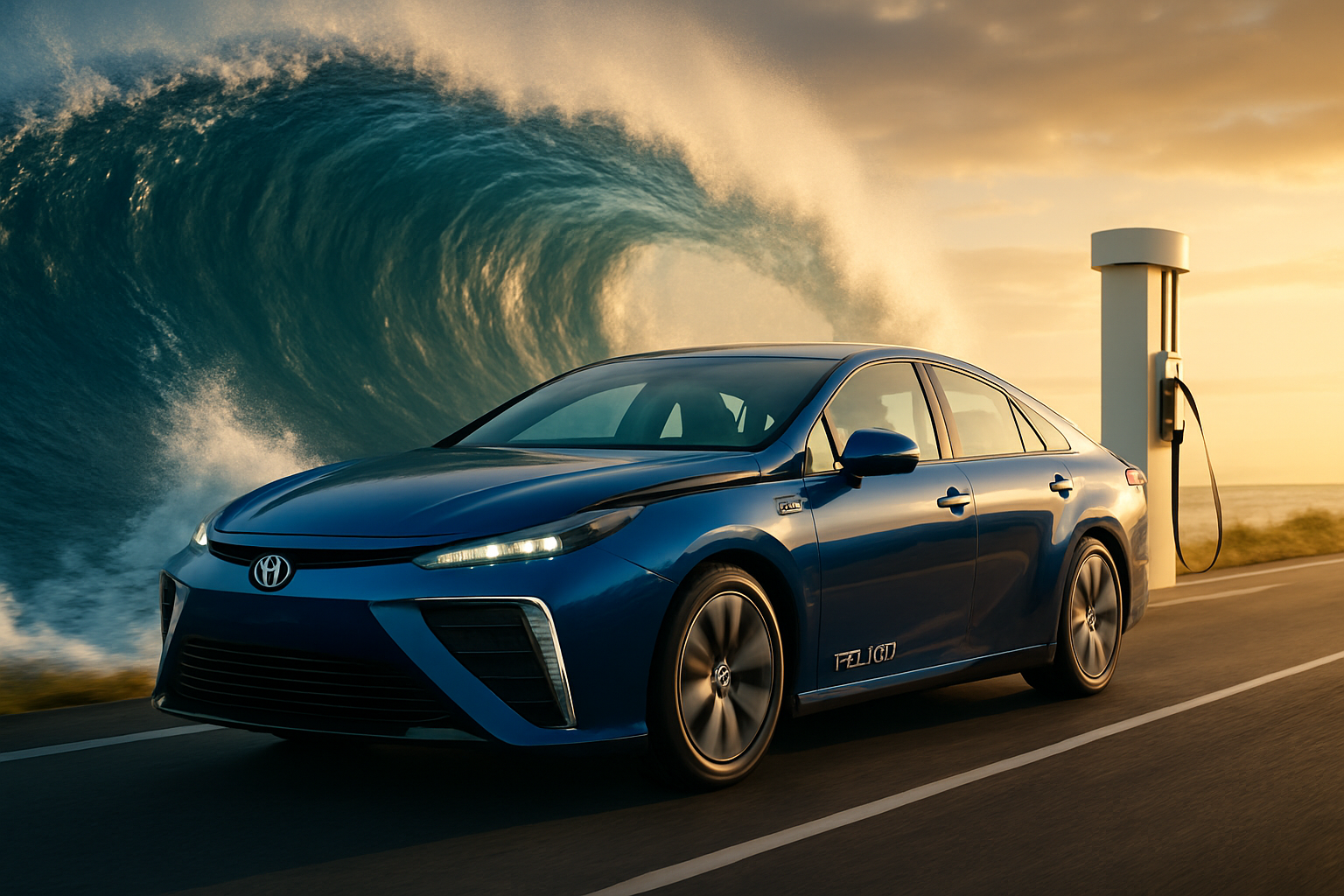Hydrogen Fuel Cell Vehicles: The Quiet Revolution in Automotive Technology
In the bustling world of automotive innovation, a silent yet powerful contender is emerging from the shadows. Hydrogen fuel cell vehicles, once confined to the realm of science fiction, are now poised to reshape our roads and redefine clean transportation. This groundbreaking technology promises zero emissions, rapid refueling, and the potential to overcome the limitations of traditional electric vehicles.

The Science Behind Hydrogen Fuel Cells
At the heart of hydrogen fuel cell vehicles lies a remarkable piece of technology: the fuel cell stack. This device combines hydrogen from an onboard tank with oxygen from the air to produce electricity through an electrochemical reaction. The process is elegant in its simplicity yet profound in its implications for clean energy.
The fuel cell stack consists of multiple cells, each containing an anode, cathode, and electrolyte membrane. As hydrogen flows into the anode, it’s split into protons and electrons. The protons pass through the membrane to the cathode, while the electrons are forced through an external circuit, generating electricity to power the vehicle’s electric motor.
Advantages Over Traditional Electric Vehicles
Hydrogen fuel cell vehicles offer several key advantages over their battery-electric counterparts. Perhaps the most significant is refueling time. While electric vehicles can take hours to fully charge, hydrogen vehicles can be refueled in a matter of minutes, much like traditional gasoline-powered cars.
Another crucial benefit is range. Hydrogen vehicles can travel significantly farther on a single tank than most electric vehicles can on a single charge. This makes them particularly attractive for long-distance travel and commercial applications where downtime for charging is impractical.
Challenges and Hurdles
Despite their promise, hydrogen fuel cell vehicles face several challenges. The most pressing is the lack of infrastructure. Hydrogen refueling stations are few and far between, making widespread adoption difficult. Additionally, the production and transportation of hydrogen can be energy-intensive, potentially offsetting some of the environmental benefits if not done sustainably.
There’s also the matter of cost. Fuel cell technology remains expensive, making hydrogen vehicles pricier than their conventional counterparts. However, as with any new technology, prices are expected to decrease as production scales up and efficiencies improve.
The Road Ahead: Industry Developments and Future Prospects
Several major automakers are investing heavily in hydrogen fuel cell technology. Toyota, with its Mirai model, has been at the forefront of this push, but others like Hyundai, Honda, and BMW are also making significant strides. These companies see hydrogen as a crucial part of a diversified approach to sustainable mobility.
Governments worldwide are also taking notice. Countries like Japan, South Korea, and Germany have ambitious plans to expand hydrogen infrastructure and promote the adoption of fuel cell vehicles. This governmental support could be crucial in overcoming the chicken-and-egg problem of infrastructure development and vehicle adoption.
Beyond Passenger Cars: The Wider Potential of Hydrogen Fuel Cells
While much of the focus has been on passenger vehicles, hydrogen fuel cell technology has exciting potential in other areas of transportation. Heavy-duty trucks, buses, and even trains are being developed with fuel cell powertrains. These applications leverage the technology’s strengths – long range and quick refueling – in scenarios where battery-electric solutions may fall short.
The maritime industry is also exploring hydrogen fuel cells as a way to decarbonize shipping. Several projects are underway to develop hydrogen-powered ferries and cargo ships, potentially revolutionizing an industry that has long relied on heavily polluting bunker fuel.
The Environmental Impact: A Full Lifecycle Perspective
To truly assess the environmental credentials of hydrogen fuel cell vehicles, we must consider the entire lifecycle – from hydrogen production to vehicle manufacturing and end-of-life disposal. While the vehicles themselves emit only water vapor, the production of hydrogen can have varying environmental impacts depending on the method used.
Green hydrogen, produced using renewable electricity to split water molecules, offers the most environmentally friendly option. However, much of the hydrogen currently produced comes from natural gas reforming, which does result in carbon emissions. As renewable energy becomes more prevalent, the potential for truly zero-emission hydrogen production grows.
A Piece of the Sustainable Mobility Puzzle
Hydrogen fuel cell vehicles represent a fascinating and potentially transformative technology in the automotive world. While they face significant challenges, their unique advantages make them a compelling option in the quest for sustainable transportation. As we move towards a future of diverse and clean mobility solutions, hydrogen fuel cells are likely to play an important role alongside battery-electric vehicles and other emerging technologies.
The road ahead for hydrogen vehicles is not without obstacles, but the potential rewards – in terms of environmental benefits, energy security, and technological advancement – make it a journey worth pursuing. As automotive journalists and enthusiasts, we’ll be watching this space with great interest, eager to see how this quiet revolution unfolds on our roads and beyond.





